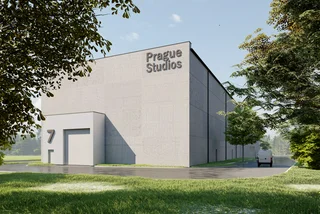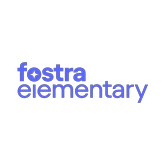The latest film version of “All Quiet on the Western Front” presents a harrowing indictment against a senseless war. While the German recruits were promised they would be welcomed home as heroes after a quick victory, history proved otherwise as World War I turned into a brutal stalemate.
This third film version of Erich Maria Remarque’s novel, which can currently be streamed on Netflix, was filmed in and around Prague and in the Ústí nad Labem Region with additional scenes shot in Prague’s Barrandov Studios.
It is the first version of the story to have a German director, Edward Berger, and a German production team. It was also filmed in German, but viewers can switch to English dubbing if they prefer.
The two-and-a-half-hour antiwar film currently has a 92 percent rating on Rotten Tomatoes, which compiles and weighs film reviews. Germany has submitted it for consideration for the Oscar for Best International Feature, formerly called Best Foreign Film. Nominations have not been announced yet.
The film is one of the better recent big productions to make use of Czech locations. “The Gray Man,” which made a lot of headlines during production, was a bit of a disappointment and has only a 46 percent rating on Rotten Tomatoes, while the Czech-financed English-language historical action film “Medieval,” based on the life of warrior Jan Žižka, is at 41 percent.
The Czech Film Commission cites an extensive list of shooting locations: Buškovice, Brody, Sychrov Castle, Skupice, Žatec, Ralsko, Točník, Vinařice, Benátky nad Jizerou, Libušín, Chotěšov, Černochov, Lišany, the Hořín chateau, Liběchov chateau, Chotýšany, Luštěnice, Králův Dvůr, Roudnice nad Labem, and of course Prague.
Prague just makes a brief appearance before the battle scenes start. At about nine minutes into the film, four enthusiastic young men forge a signature so one of them can join the German army. The scene was filmed just outside the German Embassy in Prague, which seems fitting.
The iron window grates and stone bollards at the Valašská Street palace formerly owned by the Lobkowicz family are easily recognizable, and the Church of St. Charles Borromeo is on the right. The same scene also includes a brief glimpse of nearby Thunovská Street by the stairs leading to Prague Castle.

As the singing soldiers march off into the Battle of La Malmaison in France a few minutes later, the spire of the Church of the Nativity of the Virgin Mary in Buškovice in the Ústí nad Labem Region can be seen in the background.
The military infirmary and compound they arrive at is a farm in Postoloprty, near Žatec in the Ústí nad Labem Region. Knížecí dvůr Postoloprty, which was once owned by the Schwarzenberg family, can be rented for events.
In the comments section of the venue’s Facebook page, which now features a film still, the current owners point out that some of the damage was made with CGI, and that a lot of planning and work went into creating the war-torn look. The farm is actually in slightly better condition, and is also now being restored to its former glory.
The fancy halls of the Supreme Army Command where the diplomat portrayed by Daniel Brühl, who was also a producer, tries to convince the German military leaders to surrender are at Sychrov Castle. The carved dark-wood paneling interiors and the distinctive pointed archways in the courtyard can be seen at about 35 minutes into the film.

Soldiers steal a goose from the same farm twice in the film, once just after the first battle scene and later toward the film's end. The farm and surrounding fields are in the village of Hředle, near Točník in Central Bohemia. The lack of food is a running theme in the film.
The balcony where a general appears to address the troops just before the final climax is at Hořín chateau, near Mělník in Central Bohemia. The building has a distinctive curved exterior and courtyard. The same building is seen very fleetingly earlier in the film.
Soldiers camp out near the Church of St. Wenceslas at Roudnice nad Labem at about one hour and 48 minutes into the film, and the church is seen again as soldiers file past just after the general gives his balcony speech.

The trenches, where the bulk of the film takes place, were dug near a former military base at Milovice. The same base was used in George Lucas’ World War II film “Red Tails.”
“In Milovice … we found a very good area with good depth in the background. These days it’s a sports airport, which closed its operations temporarily for three months so we could shoot there,” production designer Christian M. Goldbeck told the Czech Film Commission.
He also said that digging began in January 2021. Hundreds of meters of trenches covered the area of two football fields. The action scenes use up to 300 extras.
Director Berger told Newsweek that the main reason for coming to Czechia was that Prague is very welcoming, has great crews, and filming is slightly more economical.

A big reason, though, was that he found unrenovated locations that matched the story. “It's very hard to find that in Germany, where everything is renovated, or in France, where the actual historical locations would be. So after all the scouting, Prague just felt like the right place to go,” he said.
Oddly, this is not the first time “All Quiet on the Western Front” was filmed in what is now the Czech Republic. While the Oscar-winning 1930 version was filmed in Hollywood, a 1979 TV version starring Richard Thomas and Ernest Borgnine was shot in then-Czechoslovakia.
The American and British co-production earned a Golden Globe for Best Motion Picture Made for Television and an Emmy for Outstanding Film Editing for a Limited Series or a Special. Filming took place in Loket, Terezín, Karlovy Vary, Most, and Bečov nad Teplou.












 Reading time: 4 minutes
Reading time: 4 minutes 































